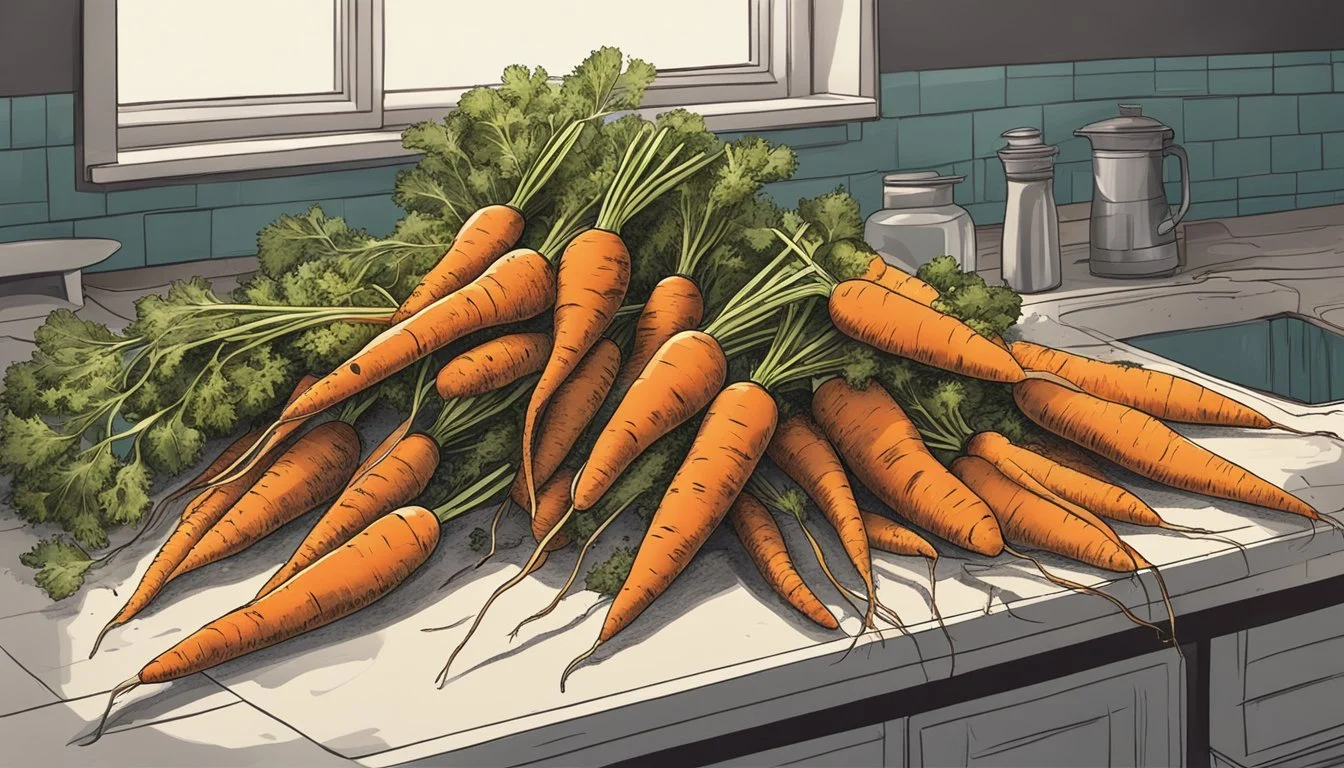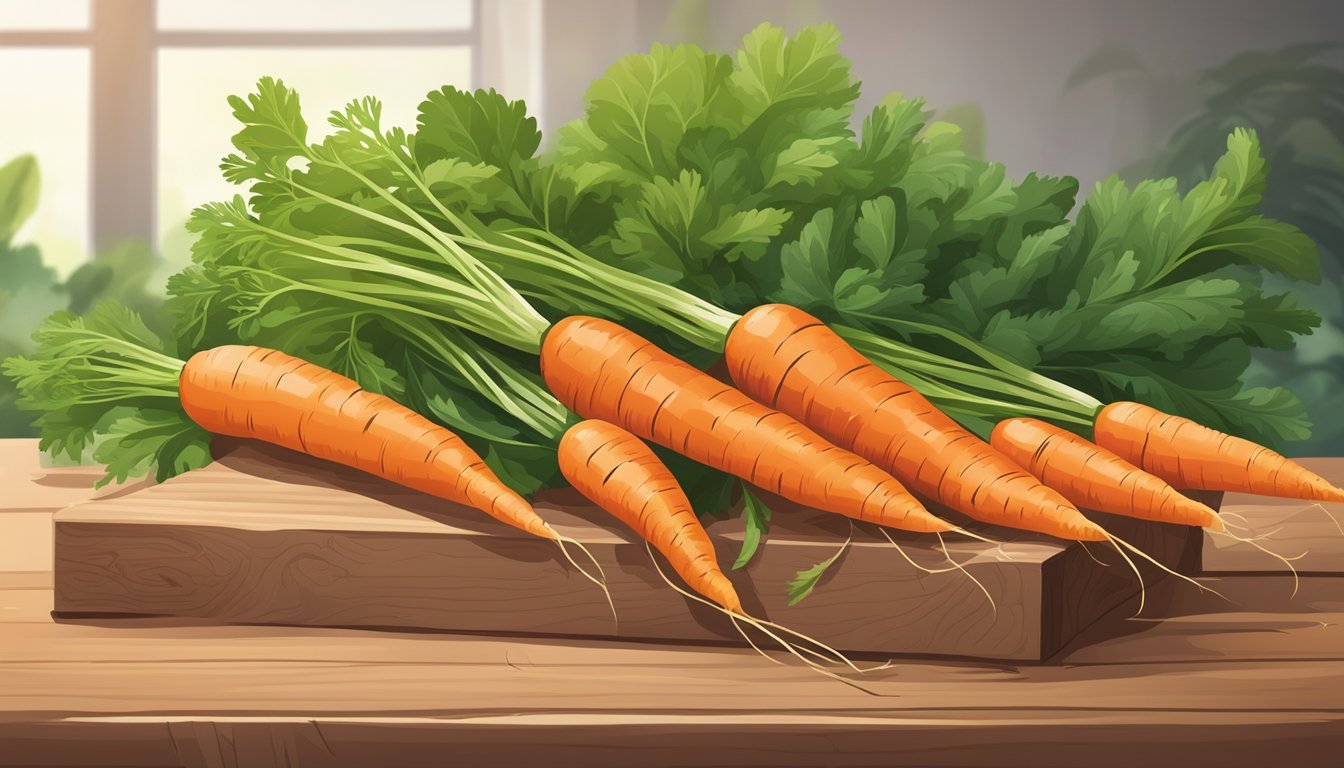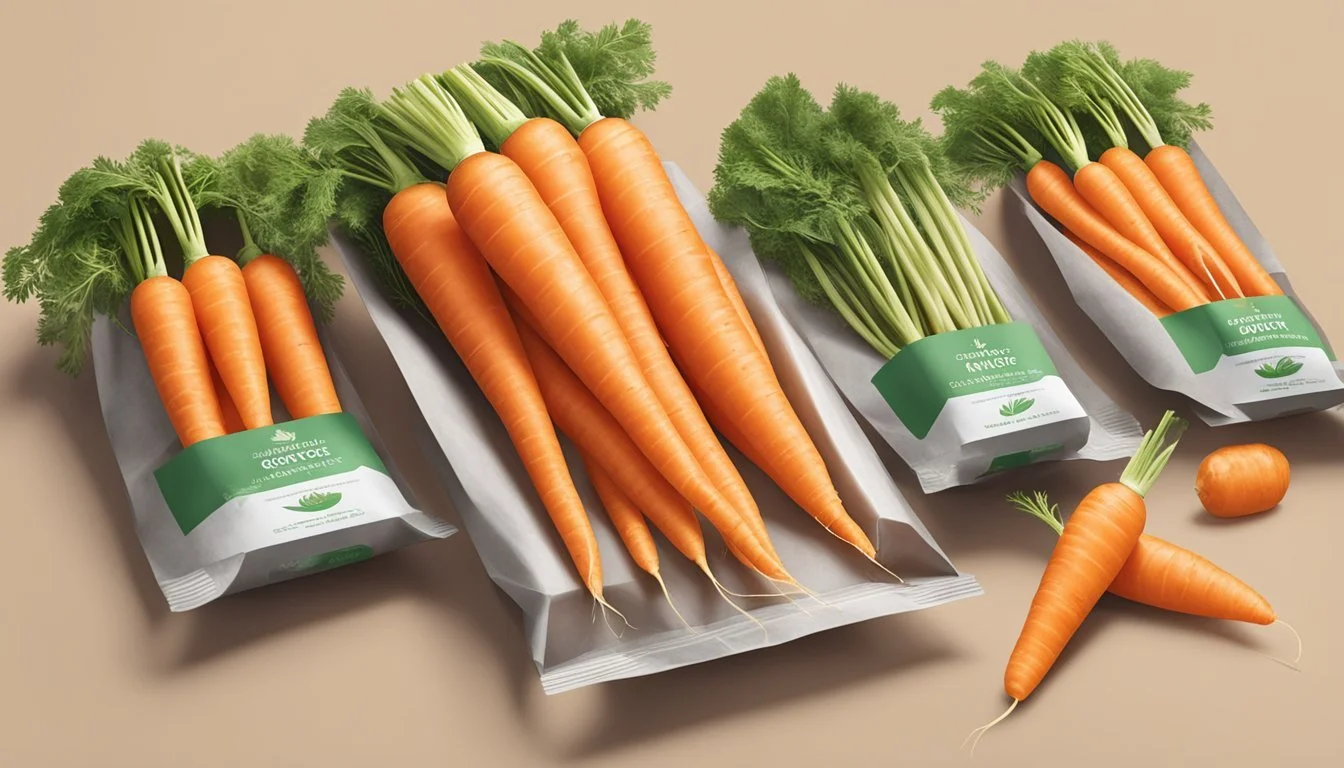Do Carrots Spoil?
Shelf Life and Storage Tips
Carrots are a staple in many kitchens due to their versatility and nutritional benefits. Yes, carrots can spoil, and it's essential to recognize the signs of spoilage to ensure you're consuming fresh produce. Common indicators of spoiled carrots include a soft and mushy texture, foul smell, discoloration, and the presence of mold.
Fresh carrots typically have a firm, crisp texture and a mild, earthy scent. To maximize the shelf life of carrots, they should be stored in a cool, dry place, preferably in a refrigerator where they can last up to four weeks. In contrast, carrots kept in warmer environments may only last for a few days before beginning to spoil.
Spending a few moments examining your carrots can save you from consuming spoiled vegetables, which could lead to foodborne illnesses. Knowing these simple signs of spoilage helps in maintaining the quality and safety of your meals, ensuring that you enjoy the best that your produce has to offer.
Understanding Carrot Spoilage
Carrots can go bad if not stored properly, presenting various signs that indicate spoilage. Knowing these signs and the factors that affect their shelf life can help prevent food poisoning and waste.
Signs of Bad Carrots
Bad carrots often show several indicators of spoilage. Appearance is a primary sign. Fresh carrots should be bright orange and free from blemishes, while spoiled ones may have mold, dark spots, or white dots.
Texture changes are another key indicator. Slimy, mushy, or soft carrots are typically not safe to eat. Fresh carrots will be firm and crisp, showing no signs of decay.
Smell is a clear signal of spoilage. Fresh carrots have a mild, earthy scent. If the carrots emit a foul or rotten odor, it's best to discard them immediately.
Factors Affecting Carrot Spoilage
Carrot shelf life is influenced by several factors. Storage conditions play a crucial role. Carrots should be stored in a cool, dry place or refrigerated to extend their freshness. Properly sealed containers can keep baby carrots from becoming rubbery.
Ethylene gas emitted from certain fruits can accelerate spoilage. Keeping carrots away from ethylene-producing fruits like apples and bananas can help.
Bacterial growth and mold formation are heightened by moisture. Ensuring that carrots are dry before storage can reduce these risks.
They should also be monitored for white blush, which indicates dehydration, or mold, which appears as dark spots or white growths.
Proper Storage Solutions
Proper storage of carrots significantly extends their shelf life and helps in preserving their nutritional value. Specific methods exist for both short-term and long-term storage, from refrigeration to room temperature storage.
Refrigeration Techniques
Refrigeration is a key method for keeping carrots fresh. Whole, unpeeled carrots can be stored in the fridge in air-tight containers or bags. To further extend freshness, place whole or cut carrots in a container of water. Changing the water every 4-5 days prevents it from becoming cloudy and helps maintain crispness. Baby carrots and peeled carrots also benefit from this method.
Use a paper towel to wrap carrots before putting them in a storage container. This prevents excess moisture which can lead to spoilage due to mold growth.
Freezing Carrots
Freezing is ideal for preserving carrots for several months. Start by blanching the carrots: wash, peel, and trim them, then slice into coins. Submerge the carrot pieces in boiling water for about 4 minutes, then transfer them to an ice bath to stop the cooking process.
After drying, place the carrots on a lined tray in the freezer until they are solid. Once frozen, transfer them to an air-tight container or a zip-top bag, squeezing out extra air to prevent freezer burn. Properly stored, frozen carrots can last up to a year.
Room Temperature and Pantry Storage
Storing carrots at room temperature is feasible for short periods. Place the carrots in a cool, dark area such as a pantry. Keeping them away from fruits that produce ethylene gas, like apples and bananas, is essential to prevent premature ripening and spoilage.
In dry climates, covering carrots with a damp cloth can help retain moisture and extend freshness slightly.
Alternative Storage Methods
Root cellars provide an excellent environment for long-term storage, maintaining a consistent temperature between 32°F and 40°F with high humidity. Use sand or peat moss to layer the carrots, ensuring they stay moisture-retentive but not wet. This method can keep carrots fresh for several months.
For those without a root cellar, placing carrots in a ventilated container in a basement or shed can also work, provided the area is cool, dark, and frost-free.
Handling Different Carrot Forms
Handling and storing different forms of carrots properly is crucial to maintaining their freshness and nutritional value. This section will provide specific guidelines for whole and processed carrots to help ensure they remain in optimal condition.
Whole Carrots
Whole carrots, including those with green tops, should be kept in a cool environment to prolong their shelf life. Temperatures between 32-38°F (0-3°C) and high humidity (98%) are ideal for storage. These conditions prevent dehydration and keep the texture firm.
Remove the green tops before storage to reduce moisture loss. Store the carrots in perforated plastic bags to maintain humidity. If any part of the carrot becomes soft or shows spots of mold, it should be discarded.
Processed Carrots
Processed carrots such as cut carrots, baby carrots, peeled carrots, and cooked carrots require different handling to stay fresh. Cut or chopped carrots should be stored in an airtight container in the refrigerator. Keeping them submerged in water can help maintain their crispness.
Baby carrots and peeled carrots may become rubbery if not well-sealed. Using a plastic bag or container with a tight seal can prevent this issue. Cooked carrots should be stored in a separate container and consumed within a few days to avoid spoilage.
By following these guidelines, various carrot forms can be preserved efficiently, maintaining their quality and safety.
Extending Shelf Life
Proper storage methods can significantly extend the shelf life of carrots by delaying spoilage. Additionally, when carrots do begin to spoil, there are creative culinary uses to avoid waste.
Tips to Delay Spoilage
To ensure carrots last as long as possible, store them in the refrigerator's crisper drawer. This spot provides the cool, humid environment that helps maintain their freshness. Whole, unpeeled carrots can last 3-5 weeks when stored this way.
Separate the greens from the carrots if they are still attached, as the greens can draw moisture from the roots, leading to dehydration.
Place carrots in a sealed plastic bag or wrap them in a damp paper towel to maintain humidity and prevent them from becoming rubbery.
Avoid storing carrots near ethylene-producing fruits like apples and bananas, as this gas can accelerate spoilage.
Creative Use of Spoiling Carrots
Slightly soft or rubbery carrots can still be saved. One option is to use them in cooked dishes such as soups, stews, or glazed carrots, where the texture change is less noticeable.
Another way to use these carrots is by dehydrating them. Once dehydrated, they can be stored for a longer period and used in recipes calling for dried vegetables.
If carrots are nearing the end of their shelf life but not yet spoiled, consider juicing them or adding them to smoothies for a nutritious boost.
This approach reduces waste and allows for the consumption of carrots that might otherwise be discarded.
Health and Nutritional Benefits
Carrots are highly nutritious vegetables, providing a range of health benefits.
Rich in vitamin A, they support good vision. One medium carrot provides more than 200% of the daily recommended intake. The primary compound, beta-carotene, is converted to vitamin A in the body.
Carrots are also a good source of antioxidants. These compounds help combat free radicals, which can damage cells. Beta-carotene is one of these powerful antioxidants.
In addition to vitamins, carrots offer a mix of essential minerals. For example, a medium carrot contains around 195 milligrams of potassium, which contributes to normal muscle and nerve function.
The nutritional value of carrots includes fiber, at roughly 2 grams per medium carrot. This fiber supports digestive health by promoting regular bowel movements and feeding beneficial gut bacteria.
A medium carrot has approximately 25 calories and is low in fat and protein, making it a healthy snack option. Carbohydrate content is around 6 grams per half-cup serving, including natural sugars that provide quick energy.
In summary, incorporating carrots into the diet provides significant health advantages, thanks to their vitamin and mineral content, fiber, and antioxidants.
Environmental Considerations
Proper storage is crucial to extending the life of carrots and minimizing food waste. Carrots should be kept in a cool, dark place, ideally in the refrigerator. A water bath method can help, where carrots are submerged in water and stored in the fridge. The water should be changed every 4-5 days to prevent spoilage.
Ethylene gas is another factor to consider. Carrots should be kept away from ethylene-producing fruits like apples and bananas. This gas accelerates the ripening process and can lead to quicker spoilage of carrots.
Moisture control is also important. Carrots that are stored in damp environments can become mushy and spoil faster. It's best to store them in perforated plastic bags or containers that allow for air circulation, which helps regulate moisture levels.
Here are some key tips for proper storage:
Cool, dark storage: Use the refrigerator.
Water bath: Change water every 4-5 days.
Avoid ethylene gas: Keep away from ethylene-producing fruits.
Moisture regulation: Use perforated bags or containers.
By following these storage practices, the shelf life of carrots can be extended, helping to reduce food waste and ensure that the carrots remain fresh and safe to eat.





